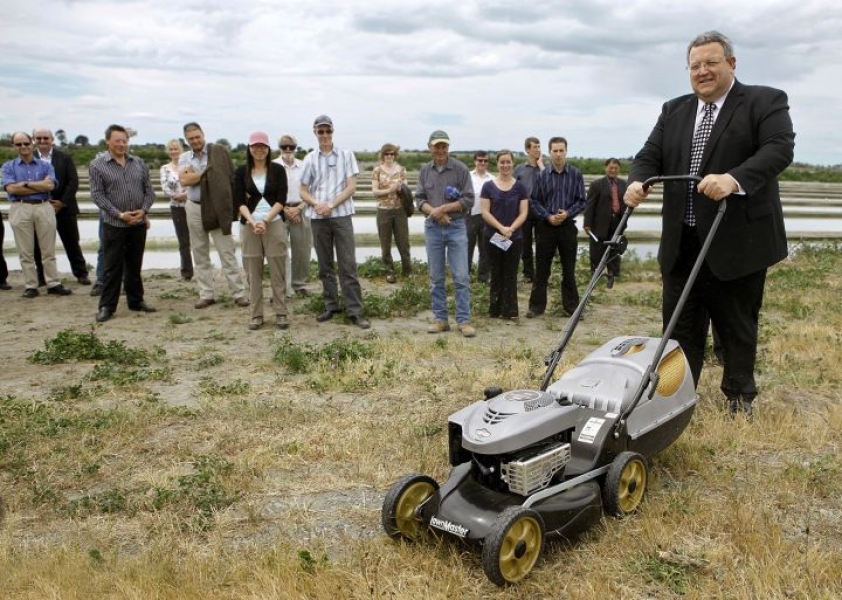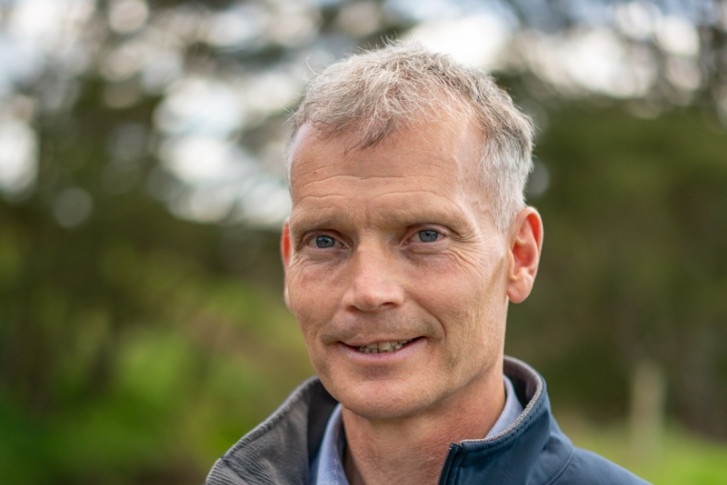Win:win – extracting energy from wastewater
Last November, Energy and Resources Minister Hon Gerry Brownlee made headlines by pull-starting a lawnmower. The fuel that powered the mower came from algae harvested from four specially designed wastewater treatment ponds. The setting was the Christchurch wastewater treatment plant, and the occasion was the launch of the world’s first complete wastewater algae-to-bio-crude oil production system.
As an alternative energy source, bio-crude oil offers the convenience of direct drop-in replacement for conventional crude oil, without the time and expense of developing delivery infrastructure or modifying the national fleet. But biofuel – once seen as the antidote to contentious (and hazardous) petroleum oil supplies – has shown its downside, as valuable food crops are diverted to fuel production, and rainforests are levelled to plant more fuel crops. So, what if you could convert a waste product – say, farm effluent or city sewage – to fuel? Innovative New Zealand science and technology have done just that.
For the next three years, NIWA and industry partner Solray Energy will be converting muck into fuel at the Christchurch treatment plant. The demonstration site combines NIWA’s high rate algal ponds – a highly efficient way to treat wastewater – and Solray’s super critical water reactor, which converts algae to bio-crude oil. The extended experiment will test the efficiency and economics of marrying wastewater treatment and algal bio-crude oil production.
Many of New Zealand’s communities and farms already use algal ponds to treat wastewater. As algae grow in the ponds they help bacteria break down the sewage and they purify the water by absorbing nutrients (e.g., ammonia and phosphate) and aiding removal of harmful microbes. Tailored to New Zealand’s climate and native algae, NIWA’s high rate algal ponds perform these tasks of disinfection and pollutant removal much more efficiently than conventional ponds.
High rate algal ponds are shaped like a race course, with a slow-moving paddlewheel to gently circulate the algalladen wastewater around the track. The ponds’ large surface area optimises the amount of solar energy they can soak up and convert into algae. The demonstration ponds are fitted with settlers that remove the algae from the effluent and concentrate it to between two and four percent solids, leaving behind treated wastewater.
The concentrated algal slurry is pumped from the ponds to Solray Energy’s reactor, where it’s further concentrated to 20–30 percent solids. Then the reactor subjects the algal biomass to intense heat and pressure, simulating the conditions in which fossil crude oil formed in the earth’s crust. The biomass reacts with water and breaks down to form bio-crude oil. Like fossil crude oil, bio-crude can be refined into hydrocarbon fractions, including petrol, diesel, jet fuel, and bitumen.
Unlike other hydrothermal reactors, the Solray reactor is fully automated, works with wet algal biomass, operates continuously, and conserves energy by using very efficient heat exchangers to transfer heat from the outflowing biocrude oil to the inflowing algal biomass.
High rate algal ponds are an economic and low-energy solution for removing nutrients and disinfecting wastewater. Converting the harvested algae to biofuel could also provide a valuable distributed-energy source for local communities. Running at full capacity, the 5-hectare demonstration site is expected to produce up to 90,000 litres of bio-crude in a year, yielding at least 40,000 litres of diesel and 18,000 litres of petrol. And that’s enough to run a fair few lawnmowers.
NIWA and Solray Energy are seeking opportunities to install several more large-scale demonstrations in New Zealand.


